How to Build a Public Butterfly Garden
Butterflies are a marvel in the insect world. They are colorful, whimsical, and can bring a smile to nearly any face. If you are a fan of these beautiful winged creatures, you may consider creating a butterfly garden near your home that is specifically designed to attract them. With a butterfly garden, you can enjoy the entire lifecycle of these unique and beautiful creatures from the comfort of your own home. Butterfly gardens can be set up in yards or on porches and balconies via container gardening. A butterfly garden is not unlike a regular flower garden, but if it is thoughtfully created, it can become a haven for local butterflies. A butterfly garden will brighten your day, improve your neighborhood, and help promote pollination in your area.
Below is a guide for creating a public butterfly garden. The guide will include:
So do some research and start planning for your own butterfly garden today! You will be happy that you did.
A Butterfly’s Basic Needs
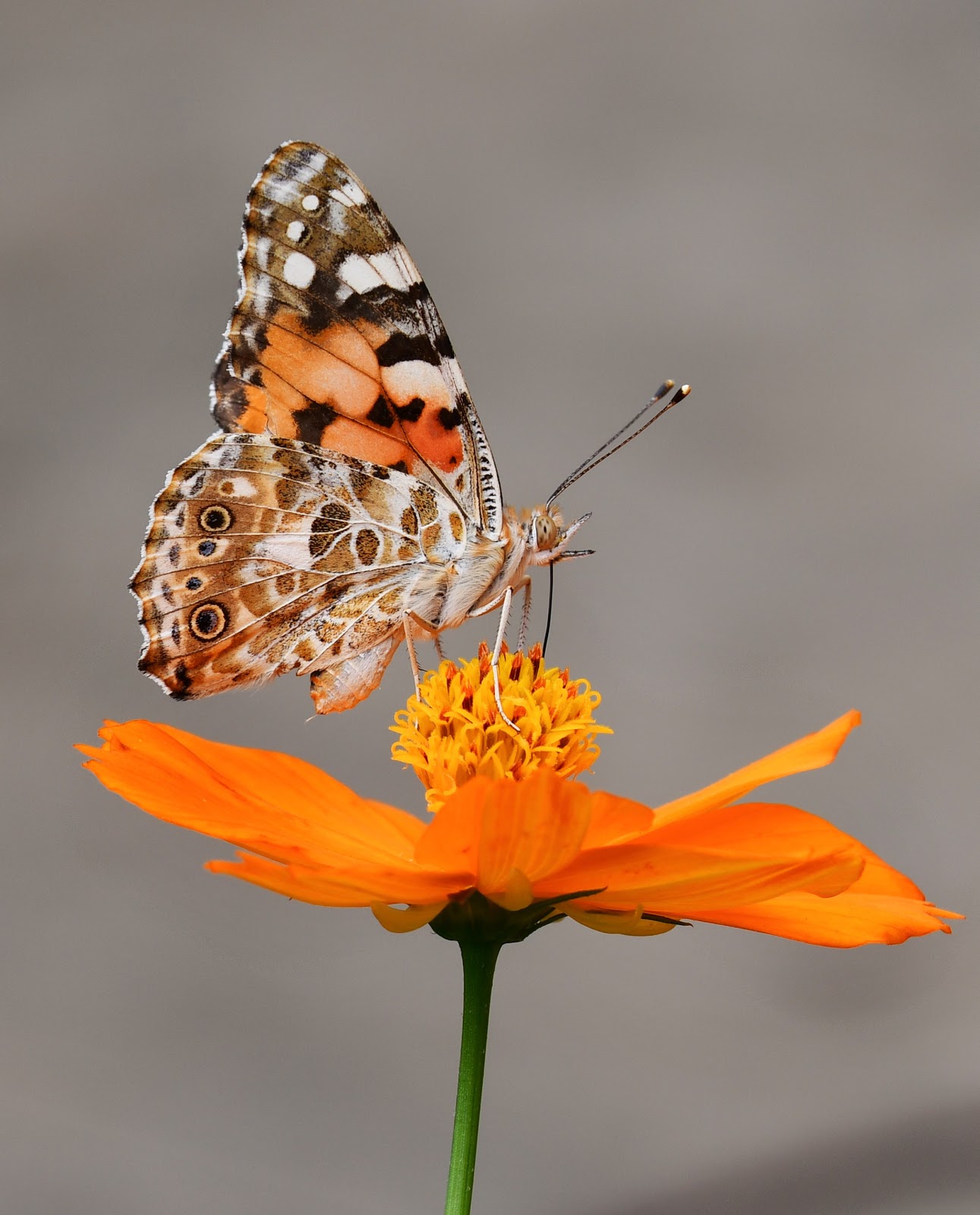
Before you start creating a butterfly garden, it is important to understand what a butterfly needs in order to thrive. Butterflies actually start their life cycles as caterpillars. Their mission during their time as a caterpillar (also known as the Larva Stage) is to eat. They begin by eating the leave that they hatched on. Once they have grown enough, they enter the Pupa Stage. During this time in a butterfly’s life, the caterpillar wraps itself in a chrysalis. From the outside, we cannot see much action but inside of the pupa the caterpillar is metamorphosing into a beautiful butterfly. Once the metamorphosis is done, a butterfly emerges.
Caterpillars and butterflies have different eating needs, and in order to support the full life cycle of a butterfly, you will need to provide both food sources. In addition to suitable food, butterflies need access to sunlight. They are cold-blooded creatures and therefore cannot regulate their own body temperature. By basking in sunlight, they are warming their bodies in order to enable flight. Butterflies will also need access to puddles. Puddles help to both regulate their body temperature by cooling them down and to support their diet with mineral-rich water. Lastly, butterflies will need to be able to mate and find a good location to lay their eggs in order to support the next generation.
How To Designate A Butterfly Garden Space
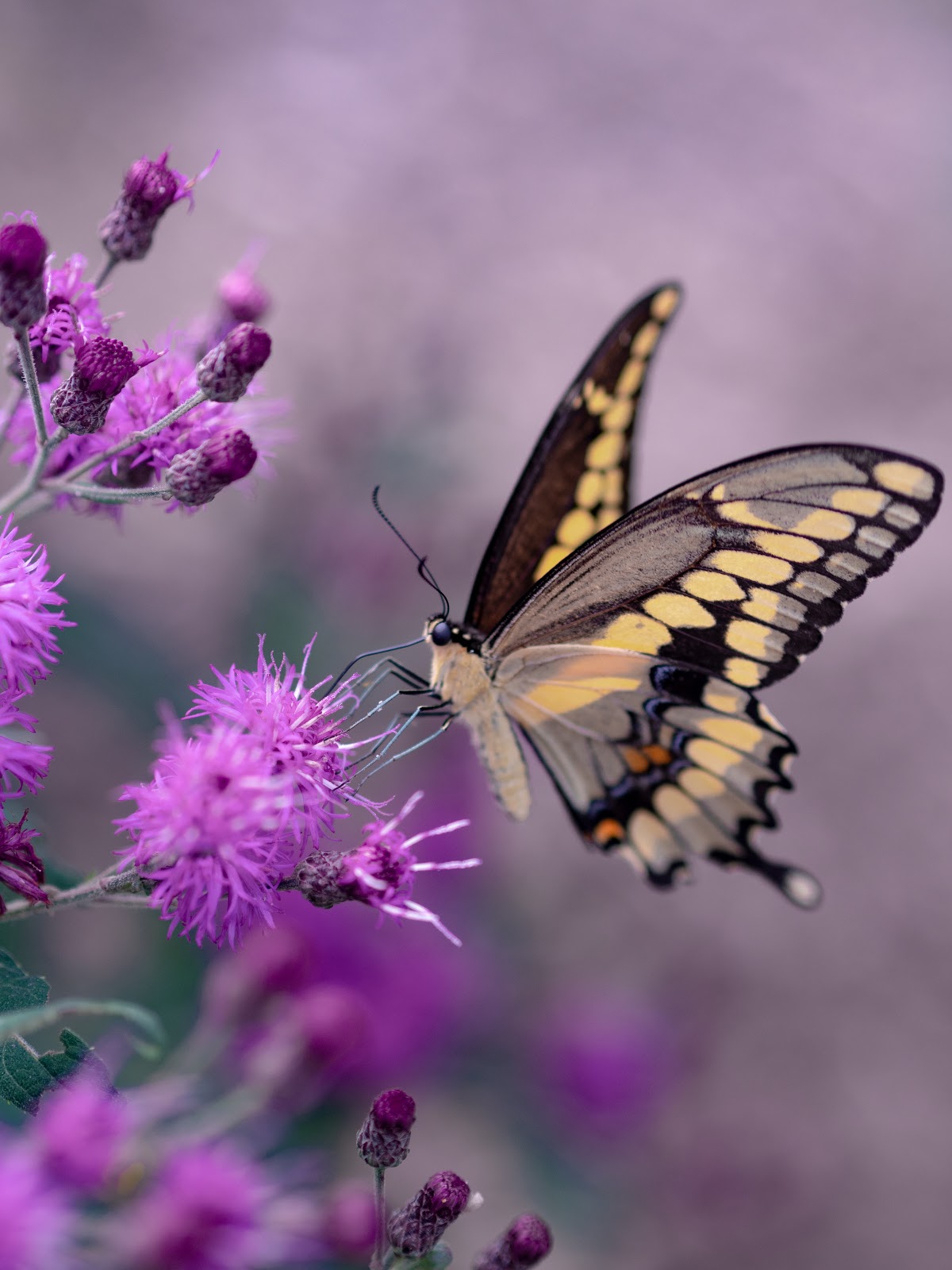
So once you understand what it will take to support a butterfly through its entire lifecycle, it will be time to designate a space for your butterfly garden. In order to successfully create a public butterfly garden, the space you choose much have the following qualities:
- The space must be sunny yet protected. The space you choose must receive a minimum of 5 hours of sunlight a day. In addition, it should be nestled against a wall or in a location that does not receive a lot of wind. Butterflies thrive when they have access to both sunshine and shelter.
- The space must be large enough to support the types of plants that butterflies prefer. This can be achieved either through gardening or container planting, just make sure that the plants have enough room to sprawl.
- The space must have an area for shallow water. Butterflies rely on puddles for their mineral-rich water. You can create your own puddle with a shallow dish that you scoop local dirt and water into, just make sure that you account for this type of puddle when you are setting up your space.
As long as a butterfly garden space has these qualities, you are good to go. You can set up a butterfly garden in your yard, on a porch, or even on a small urban balcony so long as it is sunny, large enough for plants, and contains a water feature.
How To Maximize Sunlight
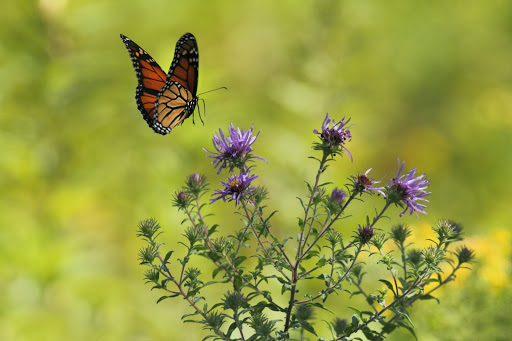
In order for a butterfly garden to thrive, it must sit in direct sunlight - the reason being that butterflies must bask and warm their wings in order to fly. But designating a sunny space is not enough. In order to maximize the sunlight, butterflies must be given a designated area in which to bask. Flagstones provide the perfect resting place for butterflies. They are flat, warm quickly in the sun, and are all around a fantastic resting area. When you set up your butterfly garden, make sure to position your flagstone so that it catches most of the day’s sunlight. A flagstone positioned in the shade or underneath a plant will not help your butterflies. Before placing your flagstone, observe your chosen butterfly garden location for a few days. Remember that as the season progresses and the daily amount and angle of the sunlight changes that it may be advantageous for you to reposition your flagstone based on sunlight conditions. Also, remember to set the basking flagstone away from any walking paths so that visitors to your garden do not trample basking butterflies.
How To Select The Right Plants for Caterpillars
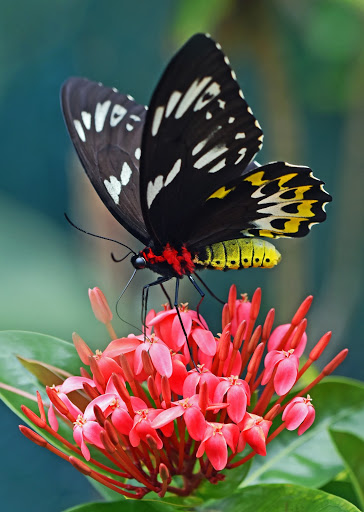
Now that you have a space set up and your sunlight figured out, it is time to select some plants to go in your butterfly garden. Remember that if you want butterflies to hatch in your garden that you will need a food source to support their first stage of life as caterpillars. The types of plants you will want to grow will depend on which caterpillars are local to your area. For example, Monarch caterpillars thrive on milkweed, but that is not true for every caterpillar and butterfly species. Oak leaves are a nearly universal caterpillar food, so if you are unfamiliar with the common types of butterflies in your area it will be smart to start there since oak leaves can feed up to 500 different types of caterpillar species.
You can find a comprehensive list of caterpillar host plants here, and a map to help you determine local butterfly species in your area here.
Remember that you cannot have butterflies without caterpillars. Caterpillars may not be as pleasant to have around as the colorful flying creatures, but it is absolutely vital to attract and support them in any butterfly garden.
How To Select The Rights Plants for Butterflies
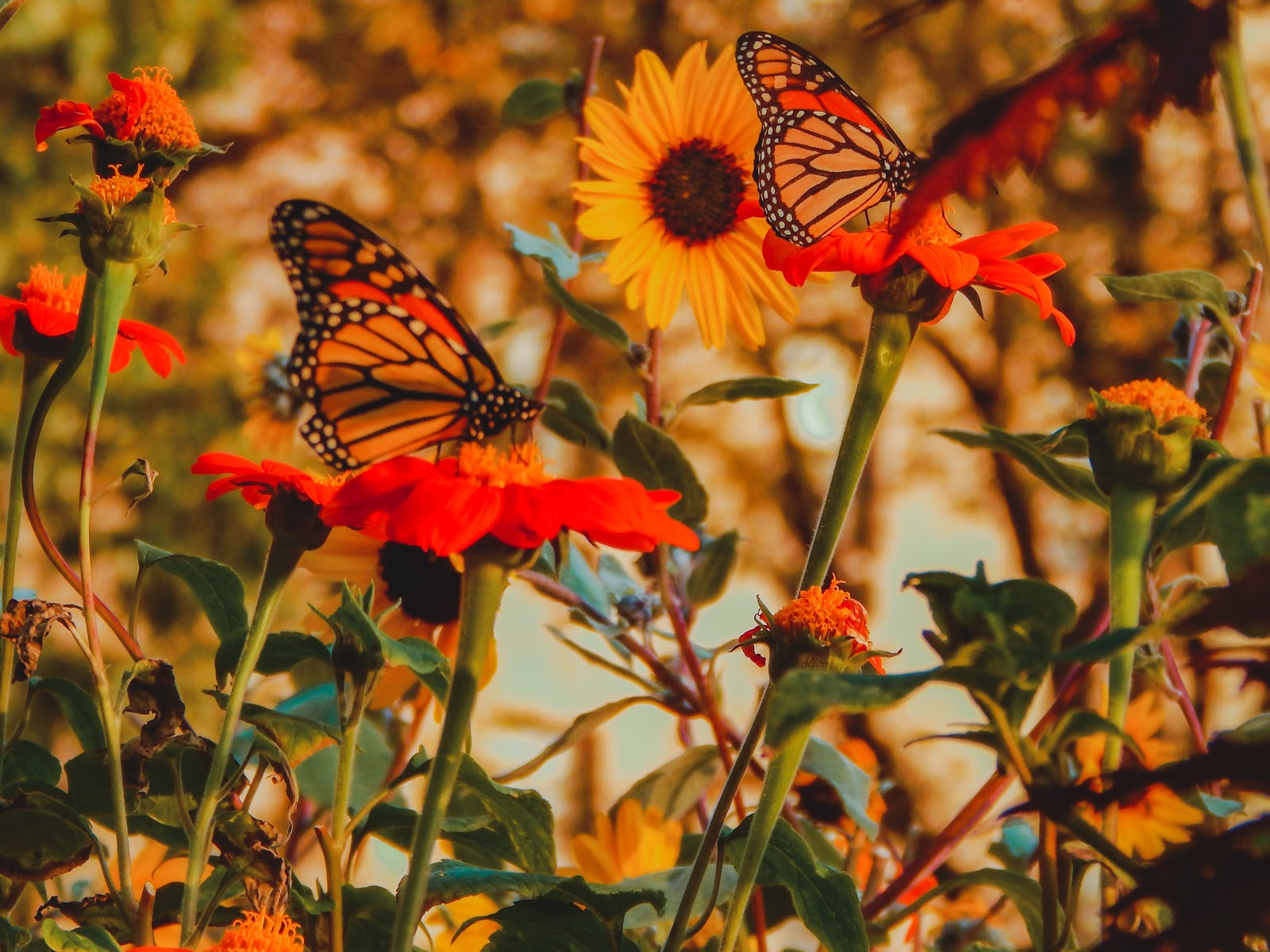
Once a caterpillar goes through a metamorphosis and emerges as a butterfly, it will have very different eating needs. While caterpillars rely on leaves, butterflies largely rely on nectar. They consumer nectar through their tube-like tongue, which is called a proboscis. It actually uncoils to collect nectar and coils back up when the butterfly is not eating. Most butterflies prefer flower nectar, which means that you can fill your butterfly garden with beautiful flowering plants that will become a food source for your insects.
It is also important for your butterfly garden to continually be in bloom so that your butterflies always have a food source. Try to plant your garden with timing in mind so that when one bloom dies, another is just beginning. It is wise to look up the preferred nectar plants for the butterfly species in your area, but keep in mind that butterflies are not terribly picky with their nectar. Things like coneflower, butterfly bush, and tall verbena are favorites of many different species. Make sure to plant quite a few nectar plants right next to one another so that the group of colorful flowers can be spotted by butterflies from a distance.
The Importance of Puddling

We have already discussed that butterflies need access to shallow water for an activity known as “puddling”, so now let’s discuss why. In order to support their diets, butterflies sip mineral-rich water. This means that clean water out of a water bottle will not do. In nature, butterflies tend to congregate around the shallow edges of puddles, creeks, or ponds, since they contain sand, silt, and minerals. Butterflies will not risk drinking from deep water.
Puddling is also important for regulating a butterfly’s body temperature. If they get too hot while basking in the sun, they will seek out a cool or shaded place. In order to set up a puddling station in your butterfly garden, all you need to do is procure a shallow dish and fill it with water and a bit of local dirt. This dish can be left out as is, or it can be buried in the dirt in order to achieve a more natural look for your garden. It may seem strange to leave standing water sitting around in a garden, but it is a completely necessary element in a butterfly garden.
How To Create Appropriate Shelter
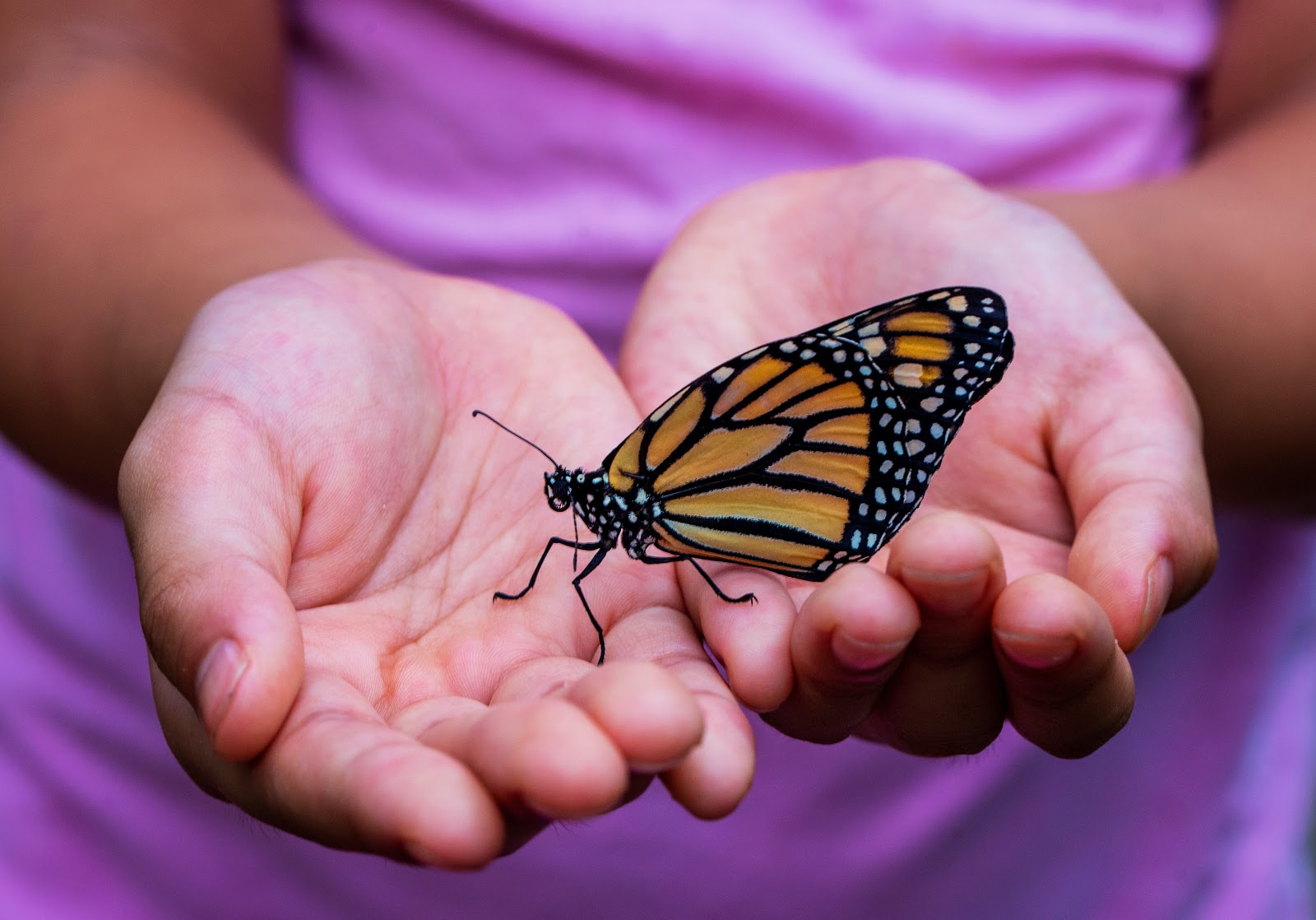
Butterflies are delicate creatures, and are thus damaged by heavy winds. Butterflies need shelter, and therefore your public butterfly garden should include a small butterfly house. This does not need to be anything formal or overly complicated...a simple wooden box with a few slots will do just fine. The wooden box protects butterflies from the elements and the slots prevent predator birds from entering. A butterfly shelter will also provide a safe place for the metamorphosis to take place.
These shelters can be purchased or built. A free building pattern can be found here. Without a proper butterfly shelter, it will be difficult for you to keep butterflies in your garden. They may stop by to eat at your nectar plants, but without a protected space to rest in, they will abandon your garden in search of something more secure.
Butterfly Trivia
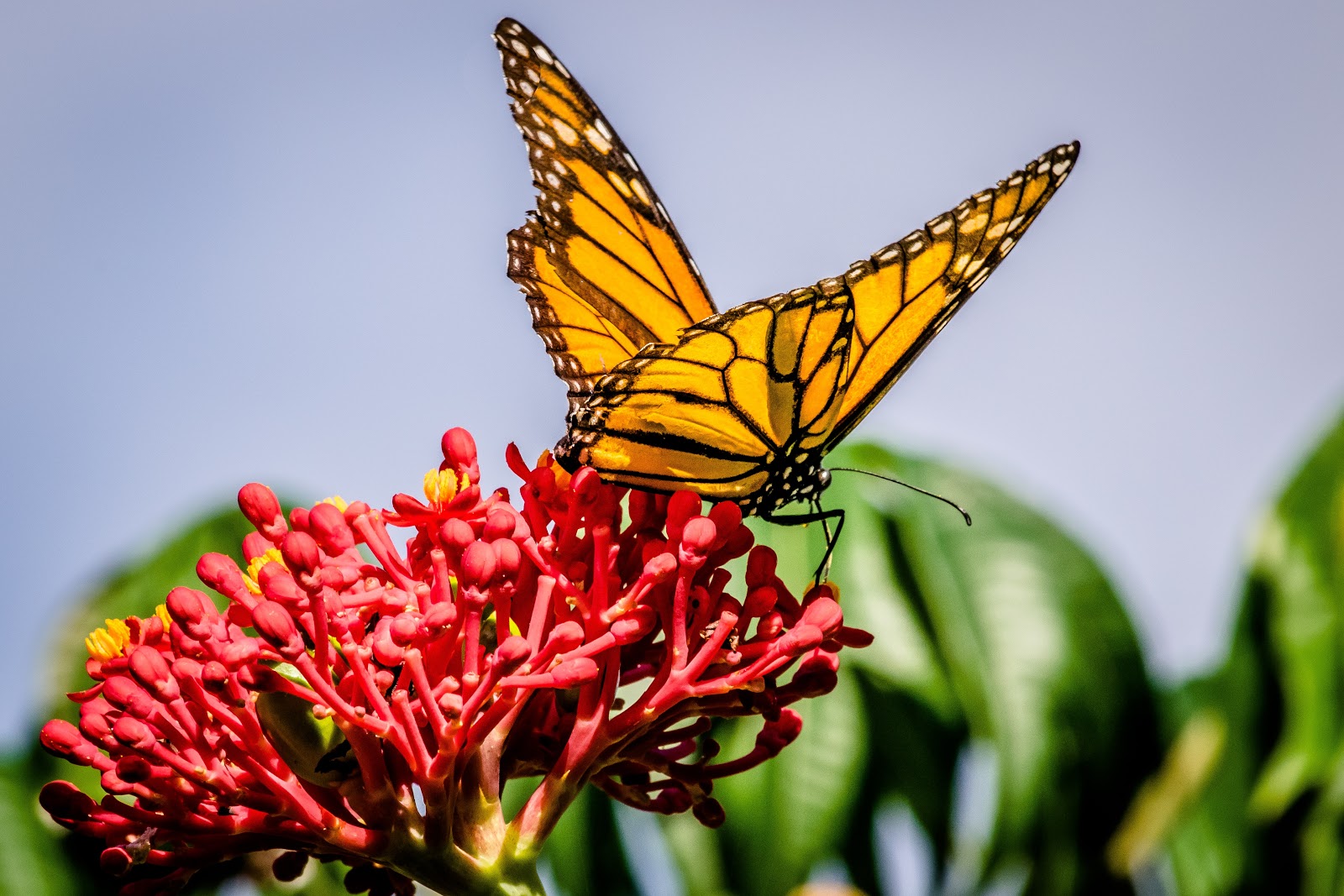
Who doesn’t love a bit of random knowledge? If you plan on setting up a public butterfly garden, you are likely going to get visitors asking you about the insects you support. Dazzle them by committing a bit of butterfly trivia to memory. Facts like these will blow your visitor’s minds:
- Butterflies are partially colorblind! They can only see red, green, and yellow.
- Butterflies can fly faster than you might think - they can reach top speeds of 12 miles per hour.
- Scientists estimate that there are somewhere between 15,000 and 20,000 butterfly species on earth.
- Butterflies can be found on every content except Antarctica. It is simply too cold there.
- Like birds, butterflies can migrate to avoid cold weather. Some migrate over very short distances but some species migrate thousands of miles. For example, Monarch butterflies (which are very common in North America) migrate more than 1,900 miles. Their migration is actually longer than their lifecycle!
- Some butterflies have patterns on their wings that look like eyes. This is a form of camouflage that tricks predators into attached their wings rather than their vital body parts like the abdomen.
- People who study and collect butterflies are called “Lepidopterists”.
- Butterflies require a body temperature of 86 degrees in order to fly, which is why basking in sunlight is so important.
- Butterflies have taste receptors on their feet.
- At one time in history, butterflies were actually called “flutterby”!
- Butterflies are important symbols in many cultures. For example, in early Christianity, the butterfly was seen as a symbol of the soul. In China, butterflies are seen as symbols of conjugal bliss and joy. Both Navajoa and Hopis tribes both have dances meant to mimic and memorialize the delicate dance of the butterfly.
Developing a butterfly garden is a fantastic summer pastime for individuals and families alike. Not only will it give you the opportunity to connect with nature and learn something new, but it will brighten the living space of everyone who lives around you. Creating a public butterfly garden is essentially a public service. Butterflies are symbols of peace, beautify, and joy...so why not bring a little joy to your life by setting up a butterfly sanctuary near you? Start today and within just a few weeks, you can be gazing upon some beautiful butterflies with all of your neighbors.
Link To Us!
If you would like to use this page as a resource for your county, city, state, library, or other page, please link to us! Simply copy and paste the following into your source code:
<a href="https://www.publicrecordsreviews.com/education-center/how-to-build-a-public-butterfly-garden"></a>
